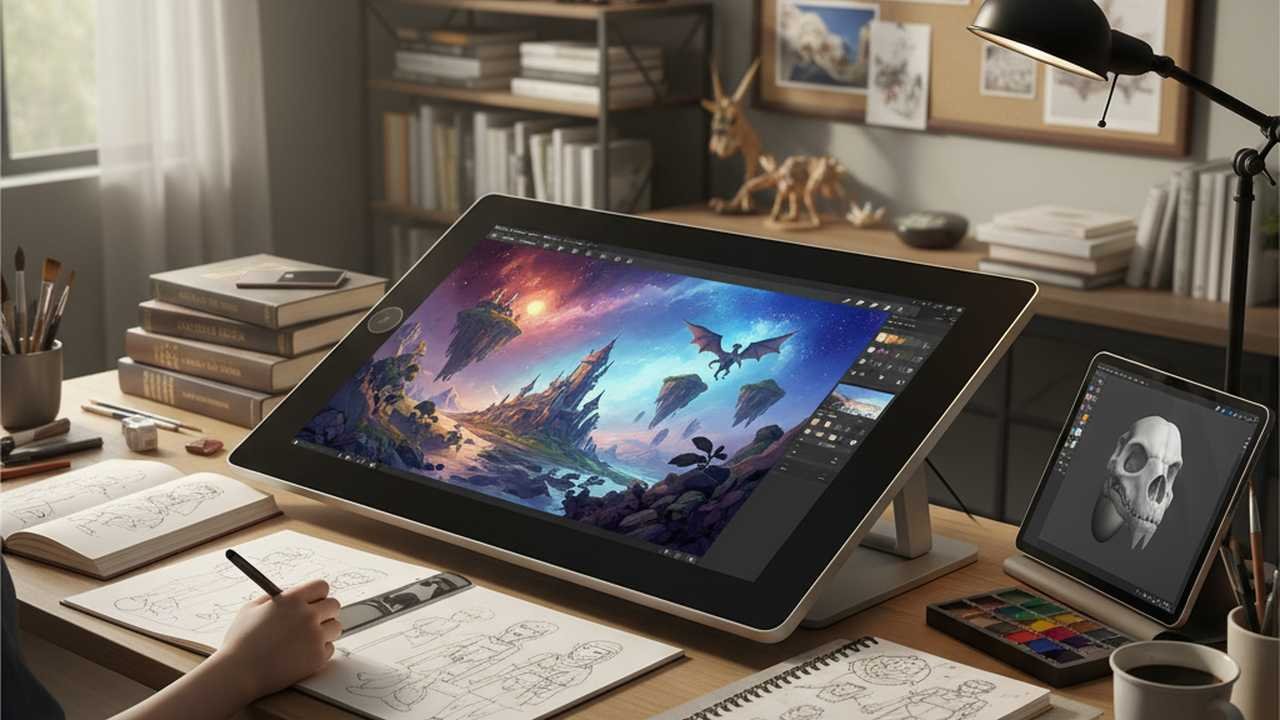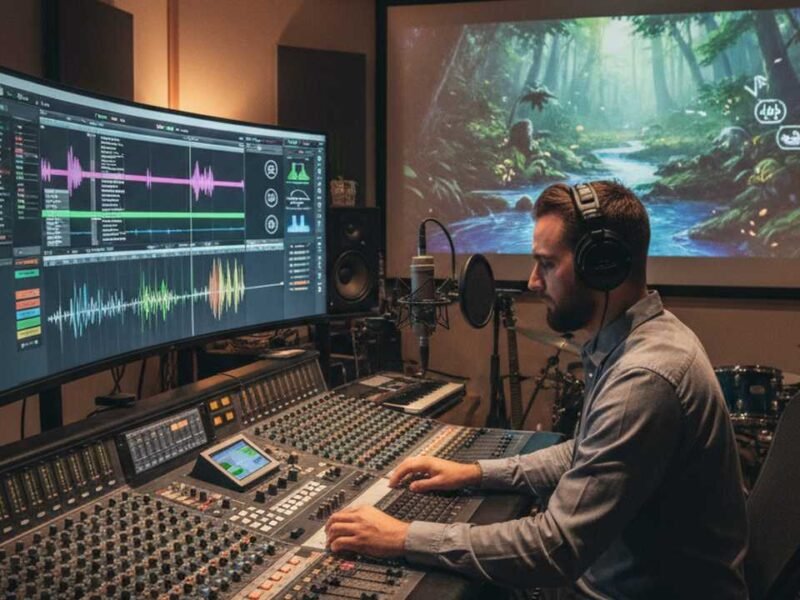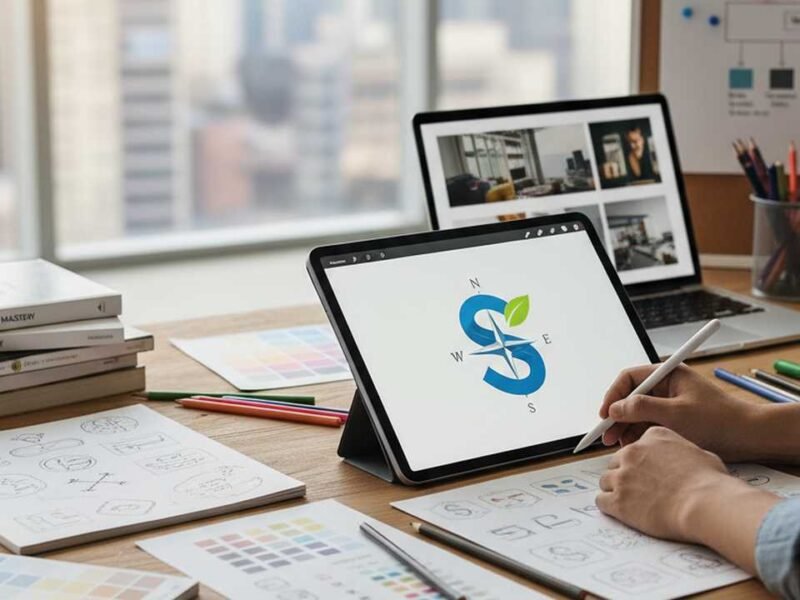In the ever-evolving world of digital art, mastering the craft of digital painting is not just a skill – it’s a gateway to creating immersive worlds and compelling characters that captivate audiences. Whether you’re an aspiring artist or a seasoned illustrator looking to refine your technique, understanding the nuances of digital painting is crucial. This comprehensive guide delves into effective strategies for learning digital painting, with insights from industry professionals and educational resources that can accelerate your journey.
Understanding the Fundamentals of Digital Painting
Before diving into the complexities of digital painting, it’s essential to grasp the foundational elements that underpin this art form. Digital painting combines traditional painting techniques with digital tools, allowing artists to create artworks that are both expressive and precise. The first step is familiarizing yourself with the software and hardware commonly used in digital painting. Programs like Adobe Photoshop, Corel Painter, and Clip Studio Paint offer a range of brushes and tools that mimic traditional media, providing artists with versatile options for their creations.
Equally important is understanding the principles of design, such as composition, color theory, and lighting. These principles guide the artist in creating balanced and harmonious compositions that draw the viewer’s eye and convey the intended mood or message. For instance, mastering color theory enables artists to select color palettes that evoke specific emotions, while a solid grasp of lighting can add depth and realism to digital paintings.
Additionally, practicing basic drawing skills is paramount. Even in the digital realm, the ability to sketch and understand anatomy, perspective, and proportions forms the backbone of any successful artwork. Regular practice, coupled with studying reference materials and real-life observations, can significantly enhance an artist’s proficiency in these areas.
Exploring Advanced Techniques in Digital Painting
Once the basics are mastered, artists can explore more advanced techniques to elevate their digital paintings. One such technique is the use of custom brushes. Digital painting software often allows users to create or download brushes that replicate various textures and effects, such as watercolor washes, oil paint strokes, or textured surfaces. By experimenting with these brushes, artists can add unique elements to their artworks, making them stand out.
Another advanced technique involves layering and blending. Digital painting offers the advantage of working in layers, enabling artists to separate different elements of their artwork and make adjustments without affecting the entire piece. Understanding how to effectively use layers and blend colors can lead to more dynamic and polished compositions. For example, artists can use layers to separate the background, midground, and foreground, allowing for easier manipulation and refinement of each element.
Furthermore, incorporating textures and patterns can add depth and interest to digital paintings. Artists can use texture brushes or import images to overlay on their artwork, creating effects like rough surfaces, fabric weaves, or natural elements like leaves and stones. This technique can enhance the realism and tactile quality of digital paintings, making them more engaging for the viewer.
Learning from Industry Professionals
One of the most effective ways to learn digital painting is by studying the work and techniques of industry professionals. Artists like Chris Hayes, known for his work in concept art and illustration, offer valuable insights into the creative process. By analyzing their portfolios and following their tutorials, aspiring artists can gain a deeper understanding of professional standards and expectations in the field.
Additionally, many professionals share their knowledge through online platforms, workshops, and courses. Engaging with these resources allows learners to receive feedback, ask questions, and participate in discussions that can accelerate their learning process. Platforms like Skillshare, Udemy, and YouTube host a plethora of tutorials and classes taught by experienced artists, covering various aspects of digital painting from beginner to advanced levels.
Moreover, networking with other artists and participating in online communities can provide support and motivation. Forums, social media groups, and art challenges offer opportunities to share work, receive constructive criticism, and collaborate with others, fostering a sense of community and continuous improvement.
Building a Consistent Practice Routine
Consistency is key to mastering digital painting. Establishing a regular practice routine helps artists develop their skills and build confidence in their abilities. Setting aside dedicated time each day or week for digital painting allows for focused practice and gradual improvement.
It’s beneficial to set specific goals for each practice session. For example, one session might focus on mastering a particular brush technique, while another could involve studying and replicating a specific artist’s style. Keeping a sketchbook or digital portfolio to track progress and reflect on past works can also be motivating and insightful.
Additionally, challenging oneself with new subjects and styles can prevent stagnation and encourage growth. Experimenting with different genres, such as fantasy, sci-fi, or realism, and exploring various themes can broaden an artist’s skill set and inspire creativity.
Utilizing Online Resources and Tutorials
The internet is a treasure trove of resources for learning digital painting. Numerous websites, blogs, and YouTube channels offer free and paid tutorials that cover a wide range of topics. These resources can provide step-by-step instructions, demonstrations, and tips that cater to different learning styles and levels.
For instance, websites like CGMA and Gnomon offer professional-level courses in digital painting and concept art, often taught by industry veterans. These courses delve into advanced topics like character design, environment painting, and storytelling through visuals, providing in-depth knowledge and practical skills.
YouTube channels such as FZD School and Proko offer free tutorials that break down complex techniques into manageable lessons. These videos often include time-lapse demonstrations, voice-over explanations, and downloadable resources, making learning accessible and engaging.
Furthermore, many artists share their workflows and processes through livestreams and recorded sessions, allowing viewers to observe their techniques in real-time and ask questions. Engaging with these resources can provide valuable insights and inspiration for one’s own work.
Seeking Feedback and Constructive Criticism
Receiving feedback is an essential part of the learning process. Constructive criticism helps artists identify areas for improvement and refine their techniques. Sharing one’s work with peers, mentors, or online communities can provide diverse perspectives and suggestions that can enhance the quality of the artwork.
It’s important to approach feedback with an open mind and a willingness to learn. Not all feedback will resonate, but considering different viewpoints can lead to valuable insights and growth. Participating in critique sessions or art reviews can also expose artists to common challenges and solutions, broadening their understanding of the creative process.
Additionally, offering feedback to others can reinforce one’s own knowledge and foster a collaborative learning environment. Engaging in discussions and critiques can build confidence and communication skills, which are vital in professional settings.
Staying Inspired and Motivated
Maintaining inspiration and motivation is crucial for continuous improvement in digital painting. Surrounding oneself with art, whether through visiting galleries, following artists on social media, or participating in art challenges, can provide a constant source of inspiration.
Setting personal projects or challenges can also ignite creativity. For example, creating a series of illustrations based on a favorite book or designing characters for a fictional world can provide direction and purpose to one’s practice.
Additionally, taking breaks and allowing time for other activities can prevent burnout and refresh the mind. Engaging in hobbies, spending time outdoors, or exploring other forms of art can provide new perspectives and ideas that can be incorporated into digital paintings.
Building a Professional Portfolio
As skills develop, it’s important to showcase one’s work through a professional portfolio. A well-curated portfolio demonstrates an artist’s abilities and style, serving as a tool for attracting clients or securing employment opportunities.
When building a portfolio, it’s essential to include a variety of works that highlight different skills and techniques. Including process work, such as sketches and concept art, can also provide insight into the artist’s creative process and problem-solving abilities.
Additionally, presenting the portfolio in a clean and organized manner is crucial. Using platforms like ArtStation, Behance, or a personal website allows for easy navigation and accessibility. Regularly updating the portfolio with new works and removing outdated pieces ensures that it accurately represents the artist’s current skill level and style.
Networking and engaging with the art community can also lead to opportunities for collaboration and exposure. Participating in art events, conventions, or online forums can help build connections and increase visibility in the industry.


